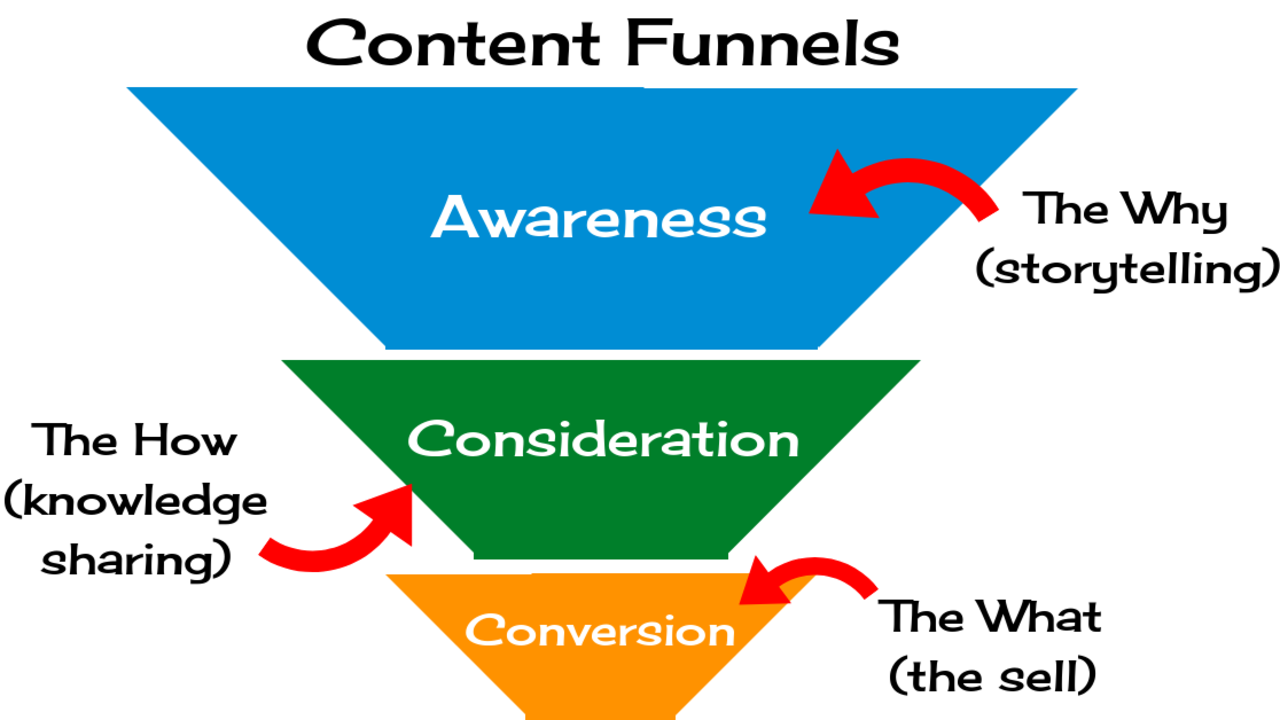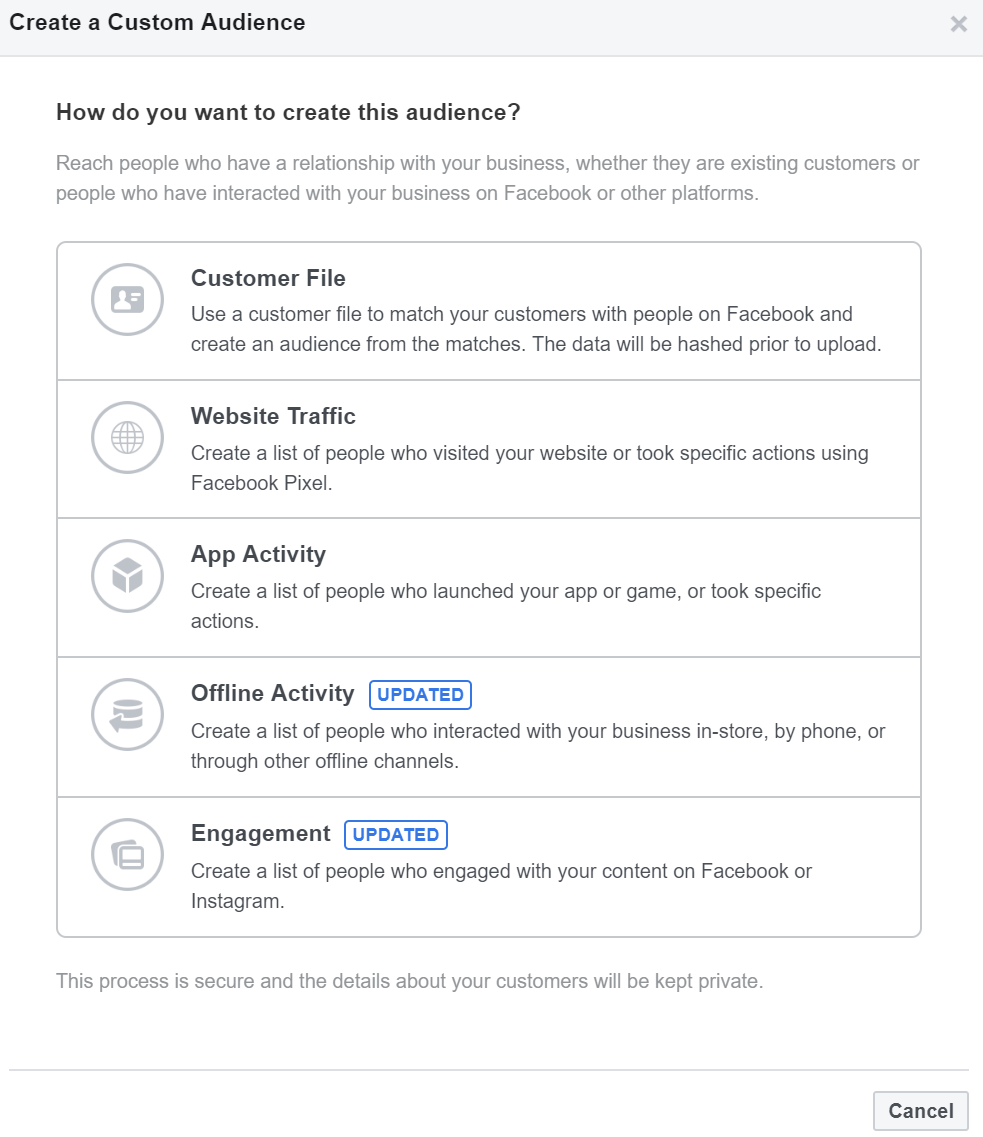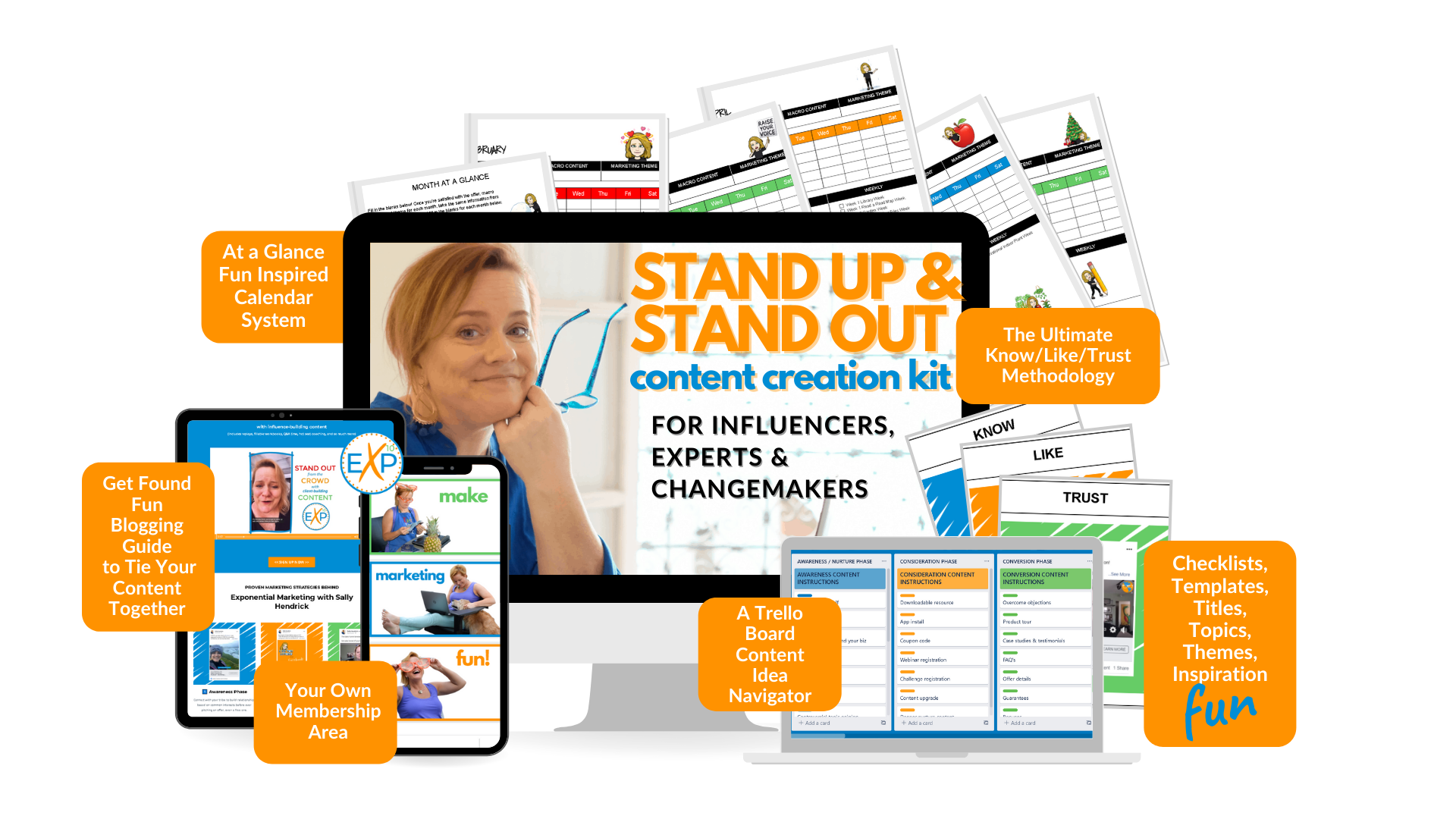
What is a content funnel?
A content marketing funnel is a system that takes as many leads as possible through a step-by-step content flow and converts them into actual customers who pay for your products or services. It can also be called a sales funnel.
When you are developing your sales funnel, there are 3 steps to consider:
- Awareness
- Consideration
- Conversion
Awareness is the phase when you're putting your brand out there. You're telling why you do what you do, delivering testimony to your authority, and sharing the story behind your brand. You are identifying your ideal client's struggles or pain points, and explaining why you have authority in this space.
This is considered the WHY phase.
In Facebook advertising, you want to use campaign objectives such as 'traffic', 'engagement', or 'video views'. These are less expensive objectives per result, and Facebook will serve them to those who are most likely to take the action put forth.
Once you've put your brand in front of people, those people are considered to have entered your funnel. They're at the mouth of the funnel, the very top, and they know the least about you, but they've at least seen you at this point.
Re-targeting for Consideration
Facebook allows advertisers to collect people in baskets, also known as custom audiences, for re-marketing. Once people have landed on your website (make sure you have the Facebook Pixel installed first), engaged with your Facebook business page post, or watched your videos on your business page, you can create custom audiences of those exact people.

Once you've created custom audiences, your next ads are served to them in the Consideration Phase of advertising.
This is the HOW phase of advertising.
The content to produce in this phase should be resources, downloads, blog posts, videos, audios, or other content that tells your potential prospects how you do business. It educates them on your products or services, gives them solutions to some of their problems, and explains how you can help them overcome struggles.
This phase is ripe for collecting e-mail addresses in exchange for a resource, coupon code, or some other type of free info-product, also known as a freebie. Use the campaign objectives for Leads (forms) or Conversions (with the Lead Standard Event chosen).
Hint: Make sure your Lead pixel is on the thank-you page.
As soon as you collect someone's e-mail address, they have moved further down your sales funnel. It's time to convince them to buy, or convert, and become a customer. Your goal is to get them to your sales page.
Re-targeting for Conversion
This is where more Facebook Pixel Events come into play, the Conversion Phase. Some popular standard events are 'Lead', 'Complete Registration', 'Initiate Checkout', or 'Purchase'. These snippets of code go on the thank-you pages of the various parts of your funnel's web pages. When the pixel is fired (meaning that the page loaded), a message is sent back to Facebook to say, "This person became a 'Lead'," or, "This person made a 'Purchase'," or "This person visited your checkout page."
You can now create audiences from these actions to re-market again. These audiences will be created from those who land on your thank you pages, sales pages or checkout pages.
This is the WHAT phase of your funnel.
The content you are delivering at this point has to do with what you do, your offer. Your offer should be shown to the customer in such a way that objections are covered, testimonials are shown, and any guarantees or refund policies you have are explained.
Many businesses will attempt to convince the prospect to buy right away with a limited time offer or maybe an annual payment that results in savings to the customer for services offered that are otherwise paid for monthly.
Regardless what your offer is, this is where you close the deal.
No matter what format of content you produce, you can create re-marketing audiences to re-target your Facebook ads with the right messaging at each phase of advertising. If you're a blogger, use blog posts to demonstrate each phase. If you're good with video, use videos to deliver your content. Just make sure you understand how to capture the audiences of those who engage with your content, and you can funnel your content over and over on auto-pilot to new, fresh audiences.
Want to get started creating your own advertising funnels? Join our group and get started on our free 5 step challenge.
Get content-making tips and my FUNNY HOLIDAYS calendar for FREE for daily content inspiration!



